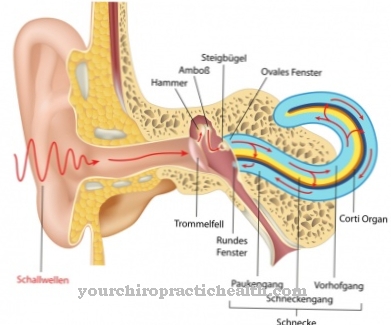Day people According to chronobiology, so-called larks are genetically diurnal early risers. Night owls or so-called owls are nocturnal and sleep longer in the morning. Those who live against their biologically preprogrammed sleep-wake rhythm for a long time can develop daytime sleepiness and even psychosis.
What are day and night people?

Chronobiology deals with the temporal organization of behavioral patterns and physiological processes. In the context of this, the biological sub-area describes, among other things, the sleep-wake rhythm of various living beings.
This rhythm is genetically pre-programmed and is difficult to change without causing discomfort. There is a certain ability to adapt, but the basic tendency cannot be changed.
In relation to humans, chronobiology differentiates between so-called day people and night people in connection with the sleep-wake rhythm. Day people are also known as larks. Night owls are often referred to as owls. Chronobiology defines these owls as late risers who are more active during the night than during the day. The larks, on the other hand, are early risers and thus day people.
Which activity tendency a person has depends on his genetics. The personal internal clock provides information about belonging to one of the groups. However, modern man no longer aligns his rhythm with his internal clock, but with timepieces. Often people therefore live contrary to their actual sleep-wake rhythm. This behavior can promote illnesses and states of exhaustion.
Function & task
The sleep-wake rhythm of a living being is adapted to its living conditions. For example, lions are genetically active during twilight. They rest under the hot midday sun of their habitat. During the day they sleep and regenerate. Only in the cool twilight phases do they really wake up and set off to hunt.
Nocturnal rodents, on the other hand, escape daylight by restricting their foraging to the night hours. During these hours of the night they are harder for many predators to spot. The sleep-wake rhythm is therefore an important parameter of evolution and the sleep phases of an organism are controlled by its genetic sleep-wake rhythm.
This also applies to humans. He goes through the phases of light and deep sleep several times during sleep. Then there are the phases of REM sleep, i.e. dream sleep. The rhythm of the sleep phases matches the sleep-wake rhythm. Towards the end of sleep, the sleep phases alternate faster and faster until the person wakes up.
If a person belongs to the larks, then the accelerated change of sleep phases is in the early morning hours. For owls, on the other hand, the quick change does not take place in the early morning hours, but with a time delay and comparatively later in the day.
Those who sleep against their biological rhythm get in the way of the natural regulation of their own sleep phases. As soon as the waking times do not coincide with the genetically prescribed waking phases, waking up disturbs the body in certain phases of sleep.
The individual sleep phases are intended for relaxation, processing and physical regeneration. The body's self-healing powers are, for example, much higher during sleep than during the waking phase. Defective cells are rejected during sleep and replaced by processes of cell division.
The individual sleep phases are tailored to this goal of regeneration. In the worst case, a disruption of the phases also disrupts the regeneration processes of the organism or interrupts psychological processing and learning processes that take place in the REM phase. The fact that people adjust their sleep according to external timers can possibly disrupt this natural process and mess up the sleep phases.
Day people who behave like night people or night people who live like day people disturb their own sleep phases and regeneration processes, as is sometimes the case in shift work in modern times. Deviating from the genetically predetermined rhythm can result in various physical complaints.
You can find your medication here
➔ Medication for sleep disordersIllnesses & ailments
Frequent waking phases that interrupt sleep can be an indication of a disturbed sleep-wake cycle or life contrary to one's own sleep-wake cycle. Such phenomena can be understood and assessed in a sleep laboratory.
Basically, people transition into the individual sleep phases in certain proportions during each sleep. If the given ratio of these sleep phase proportions is disturbed, then this can also be an indication of living contrary to your own rhythm.
The proportions of the sleep phases can also be checked during the examination in a sleep laboratory and assessed using brain wave measurements. As a result, those who do not live according to their internal clock have to struggle with various complaints.
First of all, a disturbed sleep-wake rhythm usually manifests itself in the form of exhaustion, tiredness or exhaustion. Often those affected are also more susceptible to infections, as their immune system can no longer regenerate extensively during the disturbed sleep phases. Concentration disorders are just as common, for example because learning processes can no longer be processed when REM sleep is disturbed.
Since a disturbance of the sleep phases also hinders processes of psychological processing, psychological complaints may occur later. For example, a permanently disturbed sleep-wake cycle can manifest itself in depression. If there is a chronic disorder, the depression sometimes even develops into psychosis.








.jpg)



















